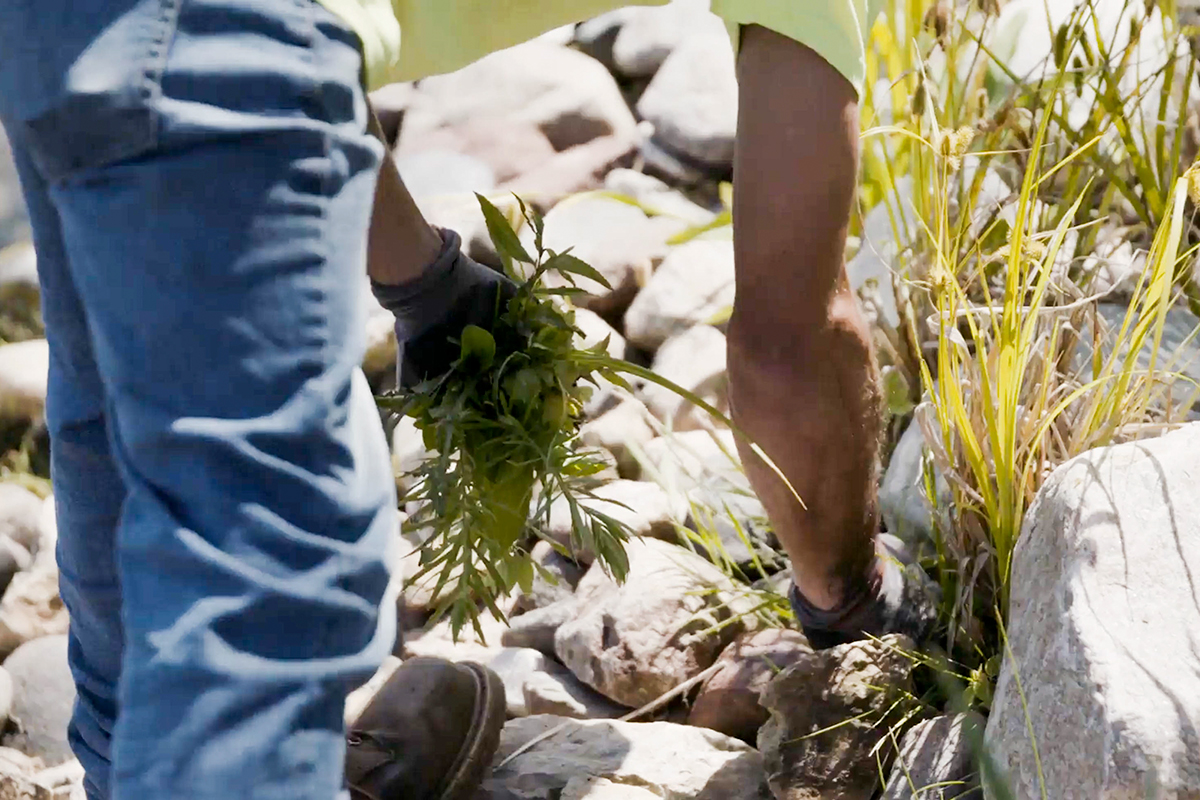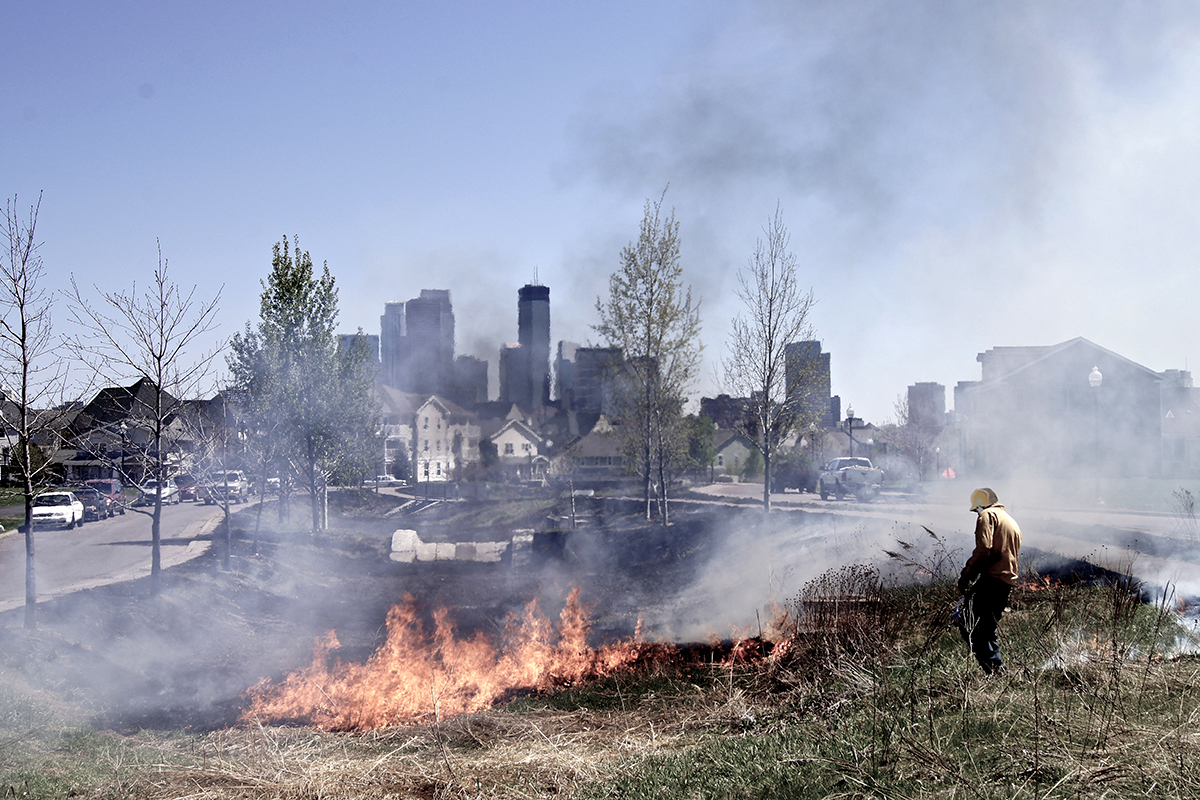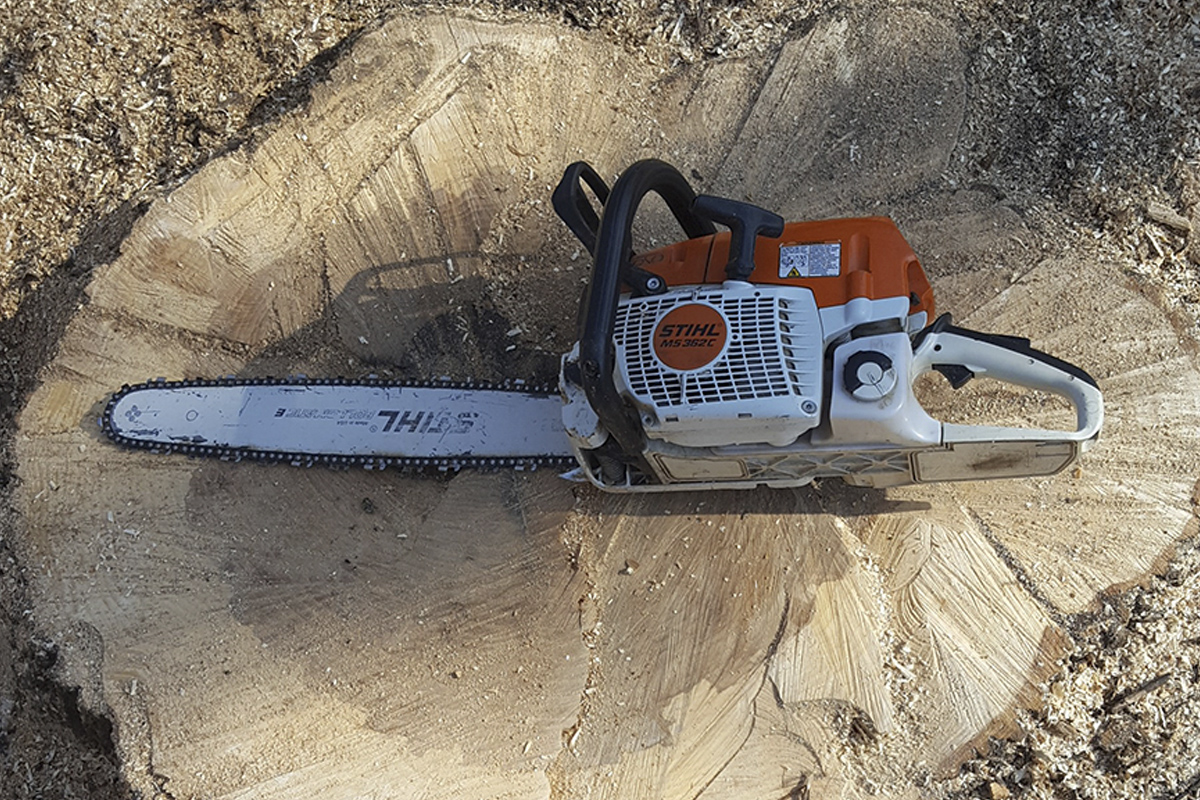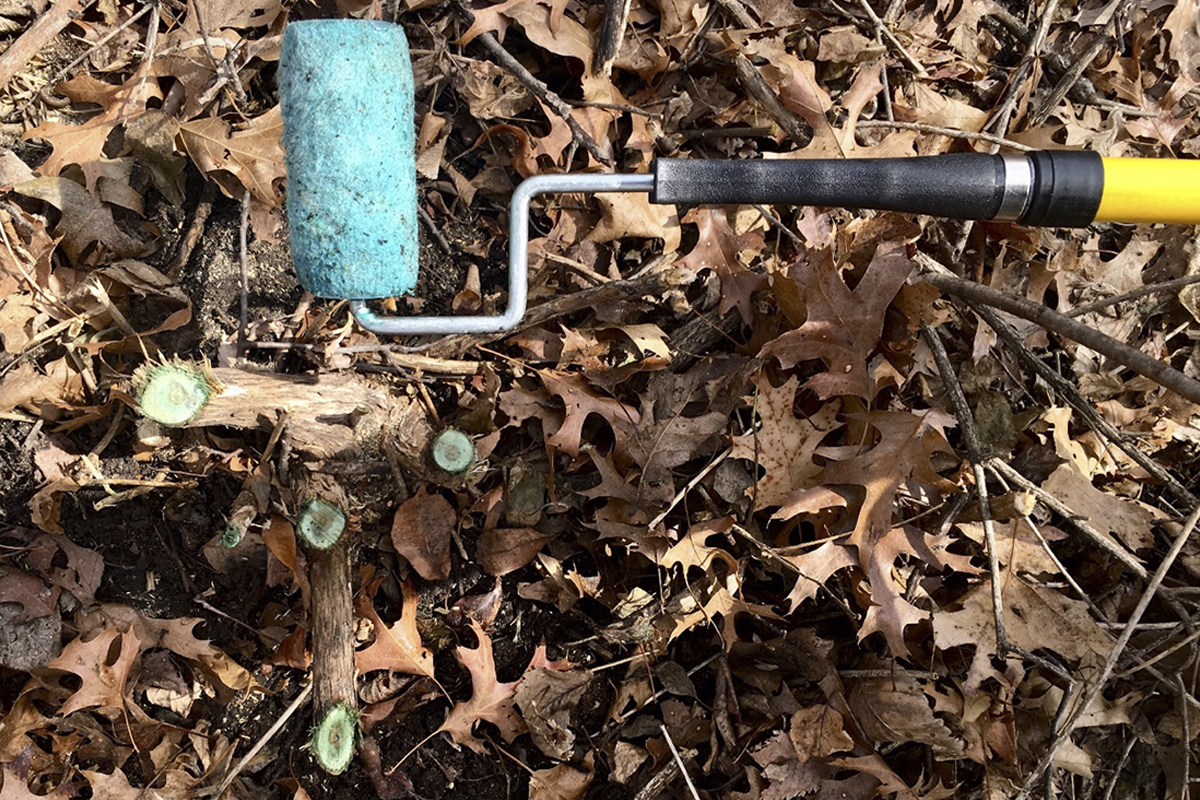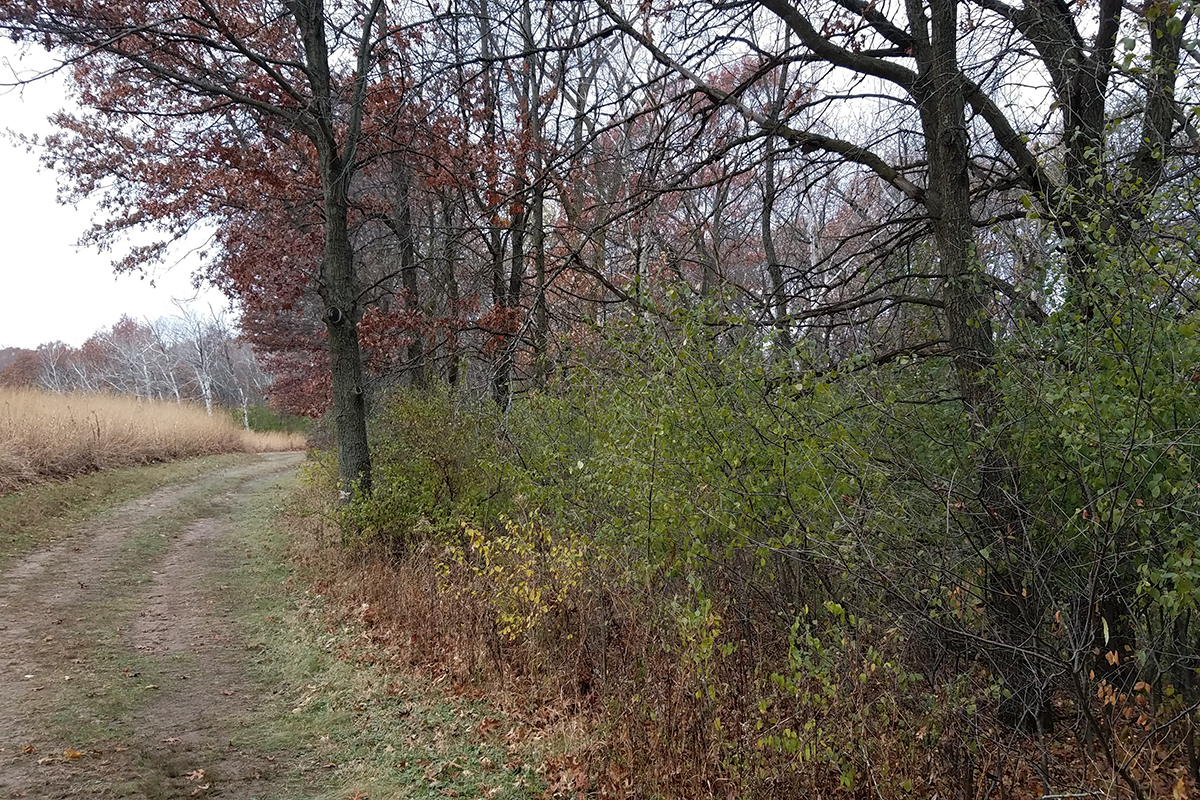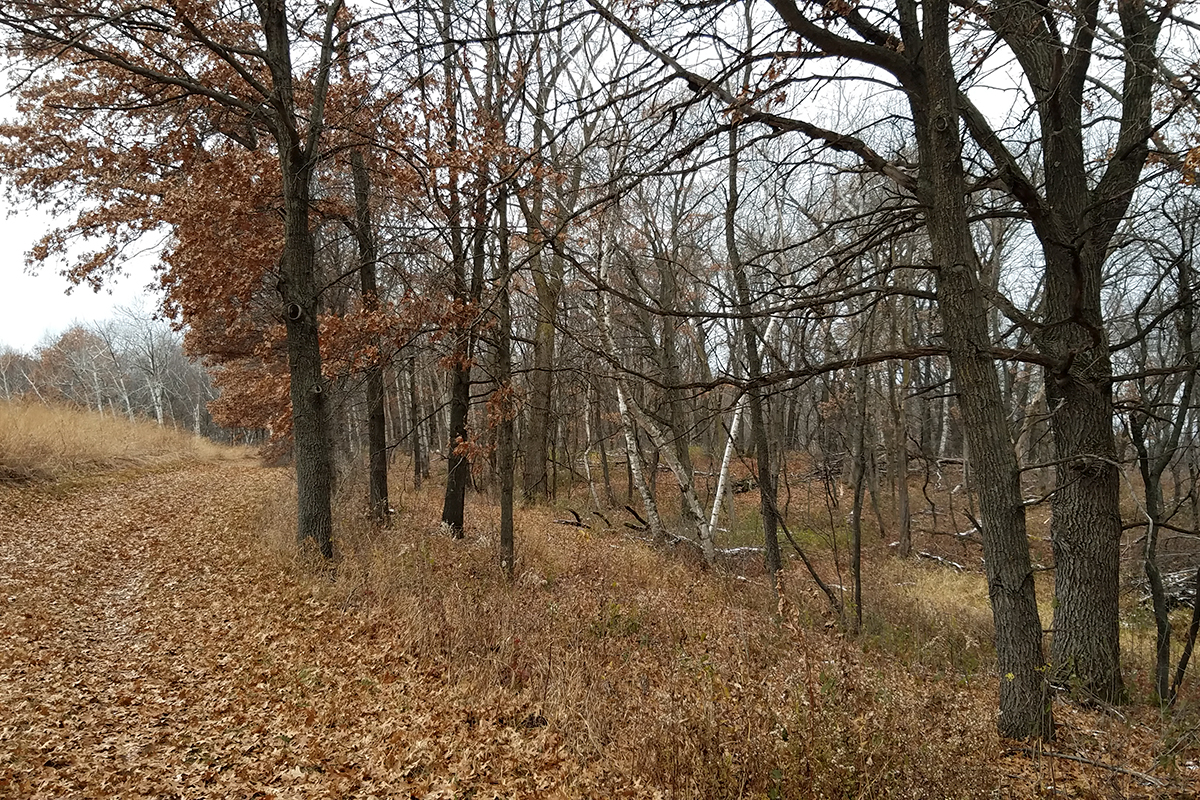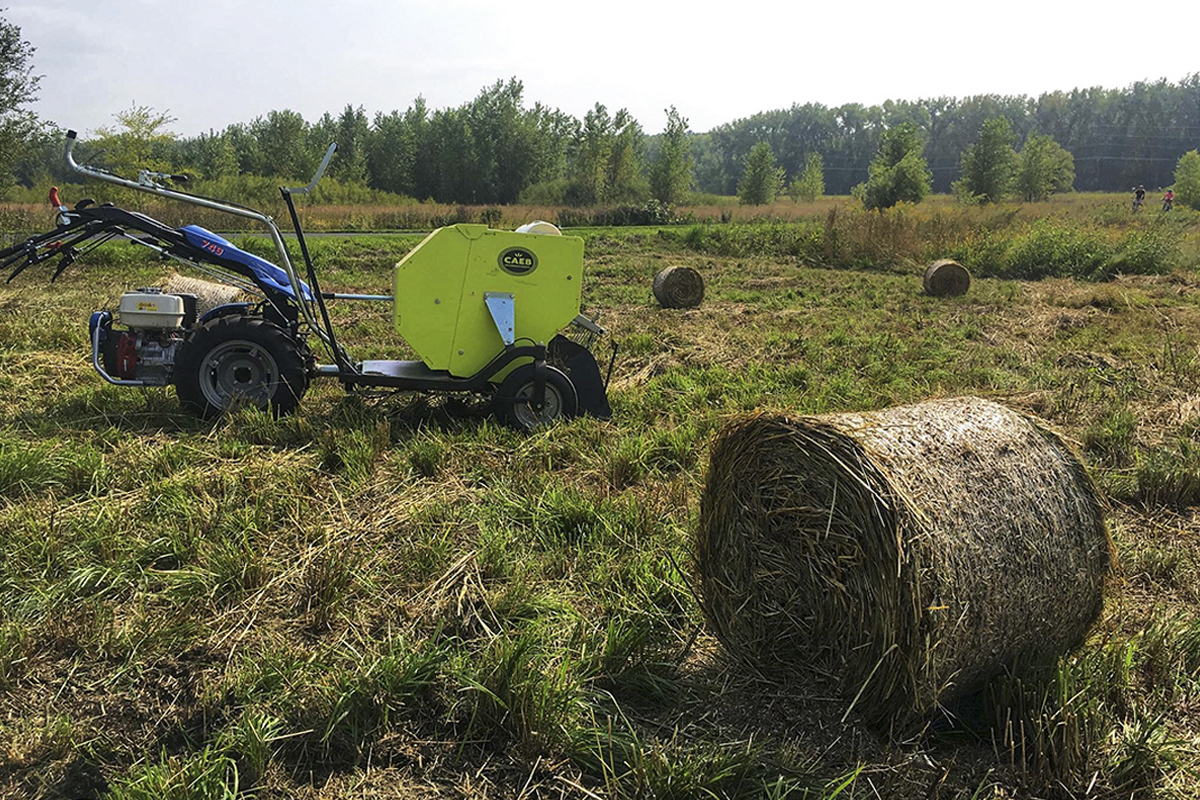LAND MANAGEMENT
Land management involves the maintenance of native landscapes to promote establishment, as well as the management of the long-term ecological function, biodiversity, and aesthetics. Each project’s individual needs and complexities can be addressed through services including integrated plant management, prescribed burning, dormant mowing, woodland management, and alternative management strategies.
INTEGRATED PLANT MANAGEMENT
All landscapes require maintenance. And while native landscapes often require a lower level of maintenance than traditional ones, native landscapes will look and function their best when invasive and undesired plant species are addressed. Annual, biennial, and perennial plants are managed through site and species appropriate activities including: Hand-pulling, spot mowing, full-site mows, and targeted herbicide application. Our staff is trained and educated in plant identification, proper IPM techniques, and licensed to apply herbicides where appropriate.
PRESCRIBED BURNING
Many plant communities in our area, including prairies and savannas, evolved with fire as part of the ecological system and as such see benefits from occasional fire. Some of the benefits can include a reduction in the thatch layer, nutrient recycling, and the control of some undesirable plant species. We use prescribed burning to safely reintroduce this process back in to a landscape. Our experienced staff is trained and certified to carry out this service, and will handle permitting through state and local level fire authorities.
DORMANT MOWING
In the beginning or end of the growing season, when plant activity is minimal, we provide a service where the prior year’s growth is mowed down. We utilize tractor mowers with flail, walk behind flail mowers, and weed/brush whips to chop-up and evenly distribute the biomass. Dormant Mowing can provide an improved aesthetic appearance by allowing the project area to green up faster and make early season flowering plants more visible. Ecologically it can help to degrade old vegetation at a faster pace, distribute native seeds, and improve efficiency in invasive species control.
WOODLAND MANAGEMENT
A service addressing invasive species, diseased/unhealthy woodlands, or improving ecological quality and diversity of our wooded areas. Invasive woodland species may include common and glossy buckthorn, non-native honeysuckles, garlic mustard, and others. We offer woodland management techniques including pile/burning, slashing, chipping, tree felling, forestry mow with skid loader, and targeted herbicide application. We also improve the quality and diversity of woodlands through selective removal of invasive or low-quality tree and shrub species, and addition of native plants, shrubs, and trees.
ALTERNATIVE LAND MANAGEMENT
In lieu of traditional land management, alternative methodologies can be considered. Prescribed Grazing with goats or other grazers can be a way to mimic natural grazing, reset vegetation back to the ground layer, or provide alternative control in situations where traditional methods are not available. Prescribed Haying can prove useful when removing vegetation from the site will help achieve long-term project goals. We also are open to innovating new strategies on a project by project basis.
Land management involves the maintenance of native landscapes to promote establishment, as well as the management of the long-term ecological function, biodiversity, and aesthetics. Each project’s individual needs and complexities can be addressed through services including integrated plant management, prescribed burning, dormant mowing, woodland management, and alternative management strategies.
INTEGRATED PLANT MANAGEMENT
All landscapes require maintenance. And while native landscapes often require a lower level of maintenance than traditional ones, native landscapes will look and function their best when invasive and undesired plant species are addressed. Annual, biennial, and perennial plants are managed through site and species appropriate activities including: Hand-pulling, spot mowing, full-site mows, and targeted herbicide application. Our staff is trained and educated in plant identification, proper IPM techniques, and licensed to apply herbicides where appropriate.
PRESCRIBED BURNING
Many plant communities in our area, including prairies and savannas, evolved with fire as part of the ecological system and as such see benefits from occasional fire. Some of the benefits can include a reduction in the thatch layer, nutrient recycling, and the control of some undesirable plant species. We use prescribed burning to safely reintroduce this process back in to a landscape. Our experienced staff is trained and certified to carry out this service, and will handle permitting through state and local level fire authorities.
DORMANT MOWING
In the beginning or end of the growing season, when plant activity is minimal, we provide a service where the prior year’s growth is mowed down. We utilize tractor mowers with flail, walk behind flail mowers, and weed/brush whips to chop-up and evenly distribute the biomass. Dormant Mowing can provide an improved aesthetic appearance by allowing the project area to green up faster and make early season flowering plants more visible. Ecologically it can help to degrade old vegetation at a faster pace, distribute native seeds, and improve efficiency in invasive species control.
WOODLAND MANAGEMENT
A service addressing invasive species, diseased/unhealthy woodlands, or improving ecological quality and diversity of our wooded areas. Invasive woodland species may include common and glossy buckthorn, non-native honeysuckles, garlic mustard, and others. We offer woodland management techniques including pile/burning, slashing, chipping, tree felling, forestry mow with skid loader, and targeted herbicide application. We also improve the quality and diversity of woodlands through selective removal of invasive or low-quality tree and shrub species, and addition of native plants, shrubs, and trees.
ALTERNATIVE LAND MANAGEMENT
In lieu of traditional land management, alternative methodologies can be considered. Prescribed Grazing with goats or other grazers can be a way to mimic natural grazing, reset vegetation back to the ground layer, or provide alternative control in situations where traditional methods are not available. Prescribed Haying can prove useful when removing vegetation from the site will help achieve long-term project goals. We also are open to innovating new strategies on a project by project basis.
CONTACT US
670 Vandalia St
St. Paul, MN 55114
612-503-4420
info@landbridge.eco
See our Privacy Policy for details on how we handle your information. We do not sell, rent, or trade your personal information
